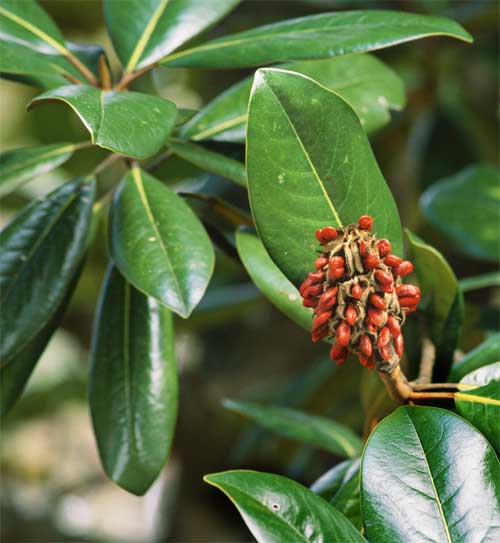
“A beautiful and popular shade tree throughout the [Cape Fear] Valley and the south. It has become a sort of cognomen for the culture, the beauty and the old-timeyness of the region.†This observation from Paul Green’s Plant Book makes me reflect on Christmastime visits to my aunt’s farm near Norlina in Warren County.
The seasonal visit included cutting the traditional red cedar tree to take back home. The cedar smelled great, but was prickly to decorate. One vivid memory of those visits is my aunt’s Christmas tree. It was a six-to-eight-foot tall loblolly pine with lights and decorations. Way back then, I thought that was a weird tree for the holidays. But, hey, my aunt had lots of them on the farm and they were definitely not prickly like the cedars.
Another vivid memory is tailing my long-striding aunt down to the mailbox, where there was a huge evergreen magnolia with limbs reaching down to the ground all around. I helped her carry magnolia branches back to the house, where she would lay them about, mixed with pine boughs.
Now that was appealing to me, and still is now. Magnolia branches provide a special warm feeling for me during the holiday season and I always especially remember my aunt.
This irresistibly fragrant, white-flowered tree of the South, sometimes called Bull Bay, Magnolia grandifolia, is common in the maritime and low-country forests all the way around the coastal Southeastern U.S. It has been planted and cherished in gardens and landscapes for so long that you sometimes see seedlings here and there, where birds and perhaps squirrels and other critters have dropped those bright red-covered seeds. The dried cone-like fruit are often added to wreaths for holiday decorations.
You can’t think Christmas in Colonial Williamsburg without all those doors adorned with magnolia-leaf arrangements. Like my aunt, those old colonials used what they had growing aplenty all about them!
Unlike so much of the other traditional evergreen foliage we bring indoors to cheer us up, and protect us from evil spirits and provide shelter for good elves, magnolia remains attractive even in its drying condition.
Native Americans of the coastal regions combined bark of magnolia, dogwood and poplar for a tea to treat malaria, sinus infections and stomachaches. And sometimes, magnolia branches were substituted for red bay branches for stirring flavor into lard.
Paul Green shared a story about a magnolia leaf. As related to him by Galley Farrington, there was a “knockout of a woman†traveling through the region “to bring joy to mankind.†Her trick, which the men were embarrassed to describe, was to take a dollar bill from each, fold it in a large magnolia leaf for them to keep in a pocket, for at least an hour, to bring them good luck. Their luck was not so good when that woman was long gone and they each discovered that nary a one of those folded leaves still held a dollar bill.
Southern magnolia brings up all kinds of memories, the best of which is bringing some indoors for this special season.

